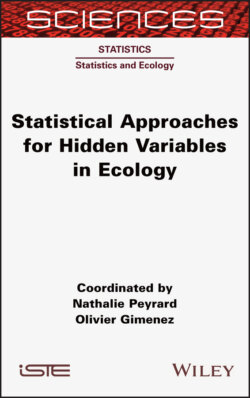Читать книгу Statistical Approaches for Hidden Variables in Ecology - Nathalie Peyrard - Страница 20
1.1.1. Reconstructing a real trajectory from imperfect observations
ОглавлениеTrajectory data are frequently marred by errors for a variety of reasons (satellite accessibility issues, geolocation errors, etc.). This results in noisy observations of the real position of the animal, which is itself unknown. The hidden variable is, therefore, the real position and the observed variable is the noisy version. In Figure 1.1, we can see that some recorded positions of a Cape dolphin, tracked using the Argos system, are actually on land – a situation which is evidently improbable. This observation almost certainly corresponds to noisy data concerning the actual position of the tracked individual.
Figure 1.1. The map at the top shows the tracking data for a male Cape dolphin (Cephalorhynchus heavisidii) in St. Helena Bay, South Africa. The coastline is shown in black, and we see that some recorded positions are actually on land. These positions are obtained using an Argos system. Figure taken from Elwen et al. (2006). Photo of a Cape dolphin by Jutta Luft, distributed under the GNU Free Documentation License. For a color version of this figure, see www.iste.co.uk/peyrard/ecology.zip
Observation errors are generally small (a few meters) in cases where positions are obtained using a GPS system on open ground and with good satellite coverage. Far larger errors may occur using other technologies, such as the Argos system (into the tens of kilometers). A hierarchical model for reconstructing real trajectories from observed trajectories is presented in section 1.2.1.
